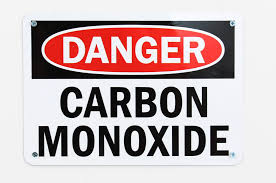Portable generators have been causing death by carbon monoxide for years but nothing has been done to make them safer
 Every year in the US, thousands of people are injured and an average 70 die from exposure to carbon monoxide after using a portable generator. With more and more power shortages caused by climate events, the number of deaths caused by dangerous carbon monoxide emissions from generators is on the rise in America. Last February in Texas, after a major power shortage, 1,400 people were treated in hospitals for carbon monoxide poisoning and 17 died.
Every year in the US, thousands of people are injured and an average 70 die from exposure to carbon monoxide after using a portable generator. With more and more power shortages caused by climate events, the number of deaths caused by dangerous carbon monoxide emissions from generators is on the rise in America. Last February in Texas, after a major power shortage, 1,400 people were treated in hospitals for carbon monoxide poisoning and 17 died.
One portable generator can emit the same amount of carbon monoxide as 450 cars together
According to a recent investigation by ProPublica, the portable generator manufacturers are well aware of the danger of their products and over the years they have been resisting multiple attempts by the Consumer Product Safety Commission to require that their devices emit less carbon monoxide.
While the danger of these products was recognized more than 20 years ago, the industry continues to self-regulate as safety regulations that would force manufacturers to make the machines safer are being fought back by lobbies. According to the lobbyists, it is not the products that are dangerous but the customers who do not know how to use them. They do not respect the guidelines that require that the generator be placed at least 20 feet away from the house with the exhaust pointing away from doors and windows.
Lobbyists also mention that multiple manufacturers agreed in 2018 to install CO censors that automatically shuts off the generators when the CO emission level becomes dangerous. While multiple manufacturers agreed they would improve their products, few of them actually did it so far.
Additionally, in the US, many States do not require home owners to have CO detectors in their house. In Texas, for example, if such regulation existed, the worst carbon monoxide disaster in the US could have been avoided.
Read the ProPublica investigation
 New York Personal Injury Attorneys Blog
New York Personal Injury Attorneys Blog


